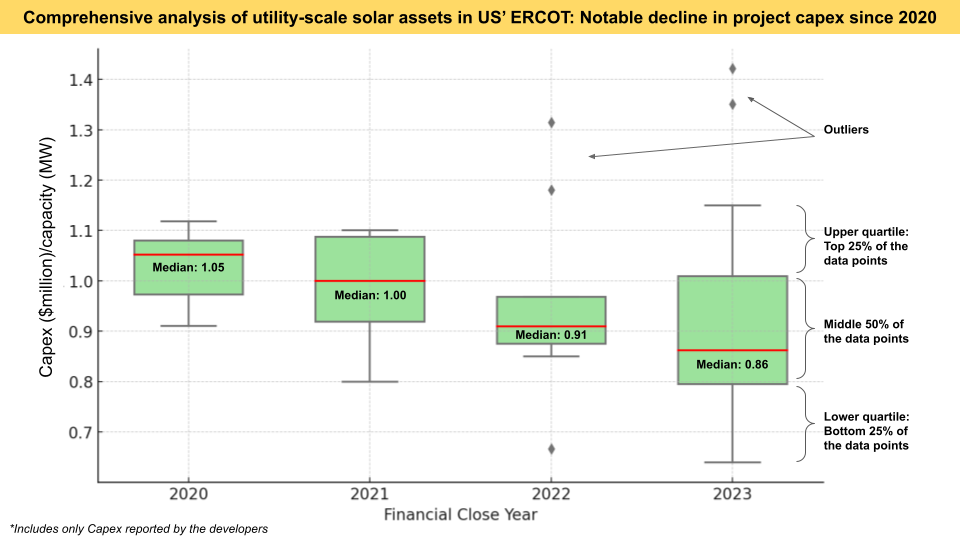
Enerdatics' analysis of the ERCOT market reveals a significant decrease of approximately 20% in capital expenditure for utility-scale solar projects. This reduction can be attributed to several factors, including lower costs of solar modules and hardware, advancements in technology, and more affordable labor and construction services.
The cost-saving trend is further magnified by major developers such as Intersect Power, NextEra, and RWE, who benefit from economies of scale in Texas's booming solar capacity. The heightened competition among suppliers in the market has also contributed to economies of scale and increased investor confidence, resulting in more favorable financing conditions. Additionally, the ERCOT market offers a separate interconnection application process that boasts faster processing times and lower fees compared to other states, further driving down the cost of solar farms in the country.
However, it is important to note that projects developed outside of the Competitive Renewable Energy Zones (CREZ) still incur higher capital expenditures of over $1 million/MW. This is primarily due to the additional costs associated with transmission upgrades and the infrastructure required to connect these projects to high voltage lines.
The above analysis is proprietary to Enerdatics’ energy analytics team, based on the current understanding of the available data. The information is subject to change and should not be taken to constitute professional advice or a recommendation.
Click to know more about Enerdatics' Renewable Energy M&A, Finance, PPA, and Projects databases.